The Go Blu offers big sound in a small package.
iFi Audio has been hard at work over the past year or so, trying to fill up some gaps in its product line, especially in the budget range.
I recently reviewed the iFi Uno and found it a competent desktop DAC/amp in the budget realm. The hip-dac2, meanwhile, provides a portable solution for those who like to stack.
- Excellent design, build, and ergonomics
- Above average battery life, frugal standby power consumption
- The ChronoDial is a joy to use
- Mostly adequate output power, high voltage swing (5.6Vrms) on balanced output
- Dynamic, rich sound with excellent treble
- xBass and xSpace are fun to play with
- Extensive codec support
- Competent USB mode
- EQ modes increase power draw
- No clip-on case supplied (sold separately)
- No gain settings
- Some hiss can be heard on very sensitive IEMs
- No app or EQ support
- Unreliable battery life estimation
The Go Blu offers a different solution to its wired-only brethren, acting as a small, portable, yet powerful Bluetooth DAC/amp with analog EQ modes.
Great marketing pitch so far – let’s see how it all works out in practice.
Technical Specifications
- Form: Bluetooth DAC/Amp
- DAC Chip: 1 X Cirrus Logic CS43131
- Bluetooth Chip: 1 X Qualcomm QCC 5100
- Frequency Response: 20Hz – 45kHz (-3 dB)
- THD+N: 0.03% (single-ended), 0.009% (balanced)
- SNR: 111dBA (single-ended), 116.5dBA (balanced)
- Codec Support: AAC, SBC, aptX HD/Adaptive/LL, LDAC, LHDC/HWA
- EQ Settings: 2 (xBass, xSpace)
- Outputs: 3.5mm single-ended, 4.4mm pentaconn balanced
- Output Power: 165mW @ 32 ohms (single-ended), 245mW @ 32 ohms (balanced)
- Voltage Swing: 2.8Vrms (single-ended), 5.6Vrms (balanced)
- Output Impedance: <1 ohm
- Battery Life: 8 – 10 hours (depending on several factors)
- Controls: Volume knob, power, EQ
- Connector: USB type-C
- Body material: Plastic, aluminum
- Dimensions: 5.4 x 3.4 x 1.3 cm
- Weight: 27g
Packaging
The iFi Go Blu adopts a no-frills packaging with only the bare necessities included.
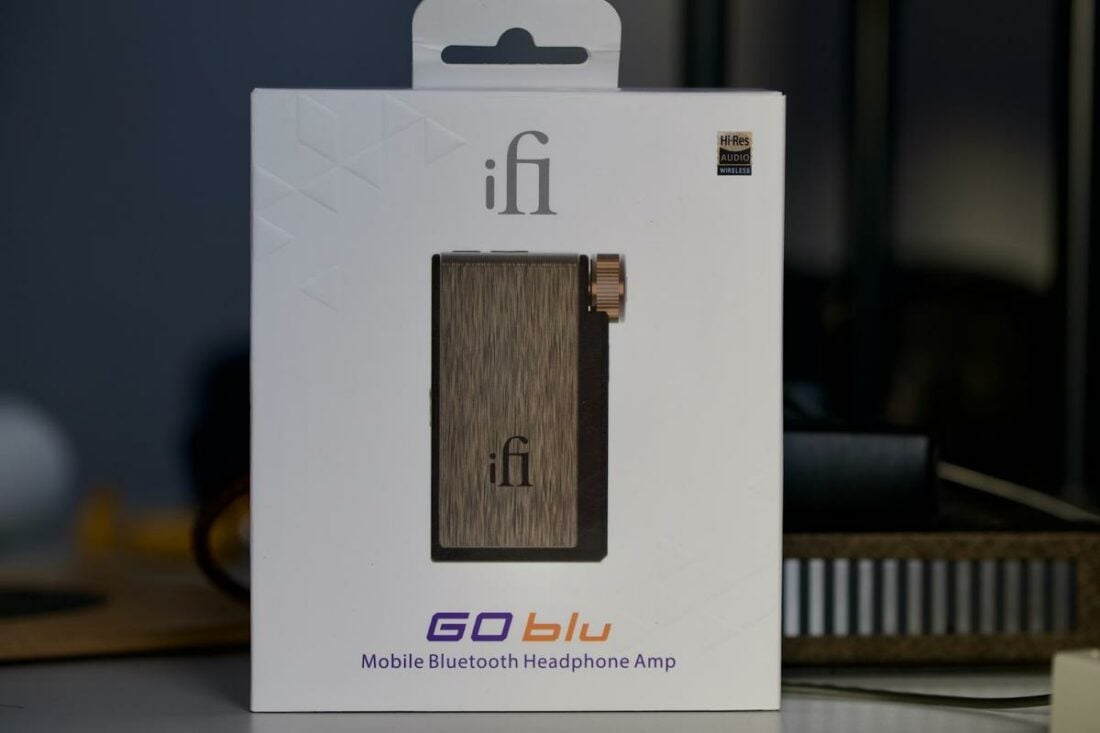
In the box
- iFi Go Blu Bluetooth DAC/amp
- USB type-C to type-A cable
- Carrying pouch
Sadly, the Go Blu does not come with clip-on accessories or a case, which would make it easier to manage when moving around.
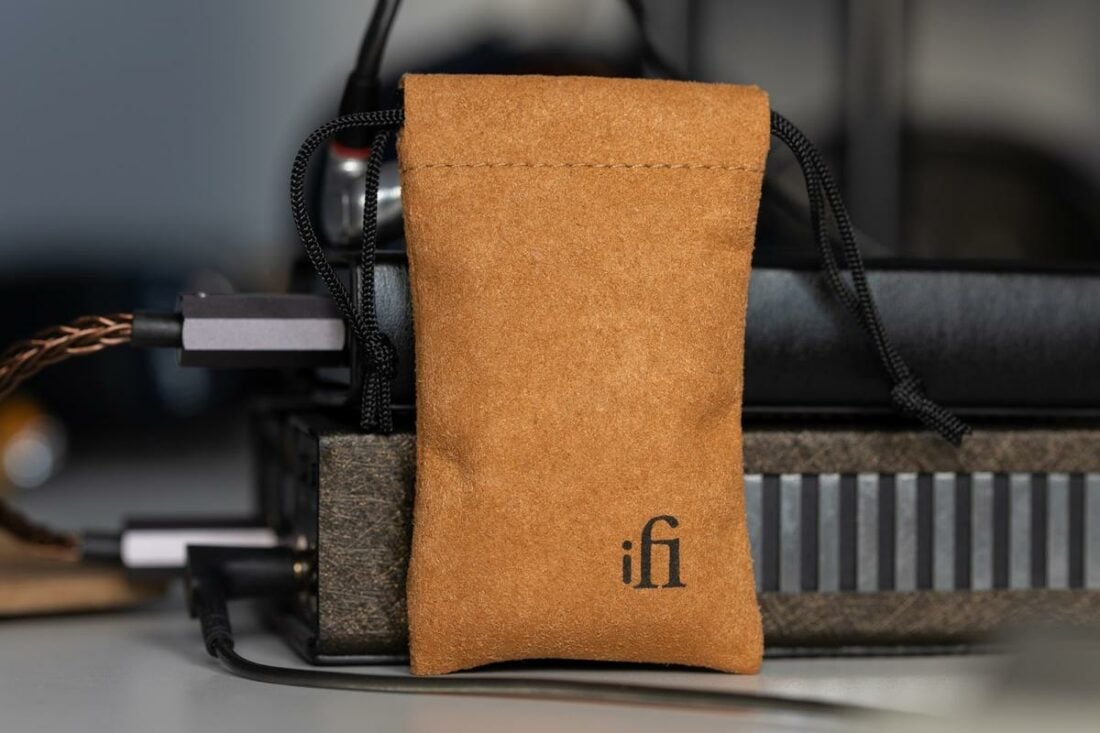
Design
The Go Blu is practically thumb-sized at only about 5 and a half cm high. iFi Audio uses the limited space by placing buttons, ports, controls, and LEDs all around the device.
The build is a mix of plastic and aluminum. The front panel is brushed aluminum, while the back and surround panels are soft-touch polymer for RF transparency.
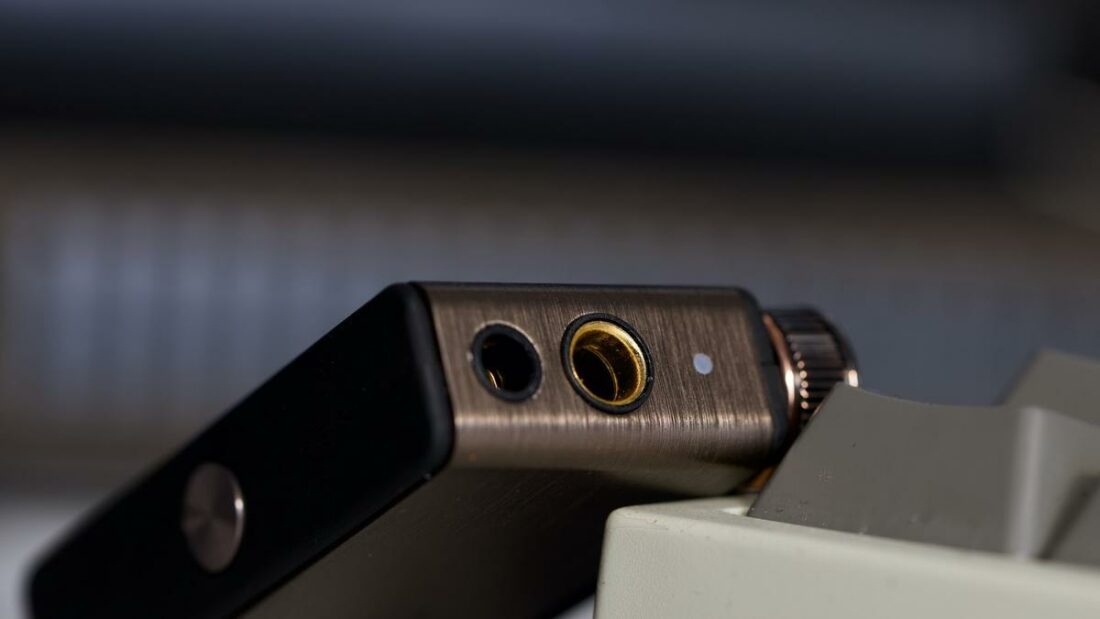
The top of the device has 3.5mm and 4.4mm balanced ports alongside an LED that indicates the current EQ mode. The bottom of the device has the USB type-C port for wired input and charging, the MEMS microphone, a status LED, and a reset button.
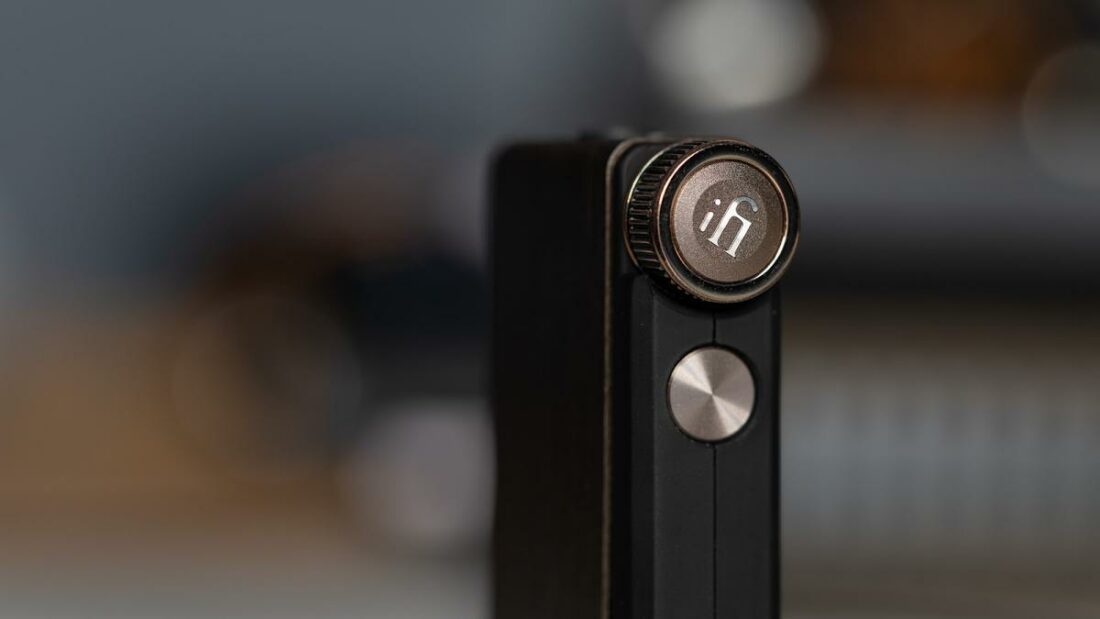
The left side of the device has the power button, which also doubles as a “pairing mode” button (holding down for a few seconds enables pairing mode). However, the right side of the device is the most interesting.
It hosts the EQ button that toggles between iFi’s proprietary xBass and xSpace EQ modes. On top of it is the ChronoDial, which acts as an analog potentiometer and controls playback.
iFi paid serious attention to detail while constructing this dial.
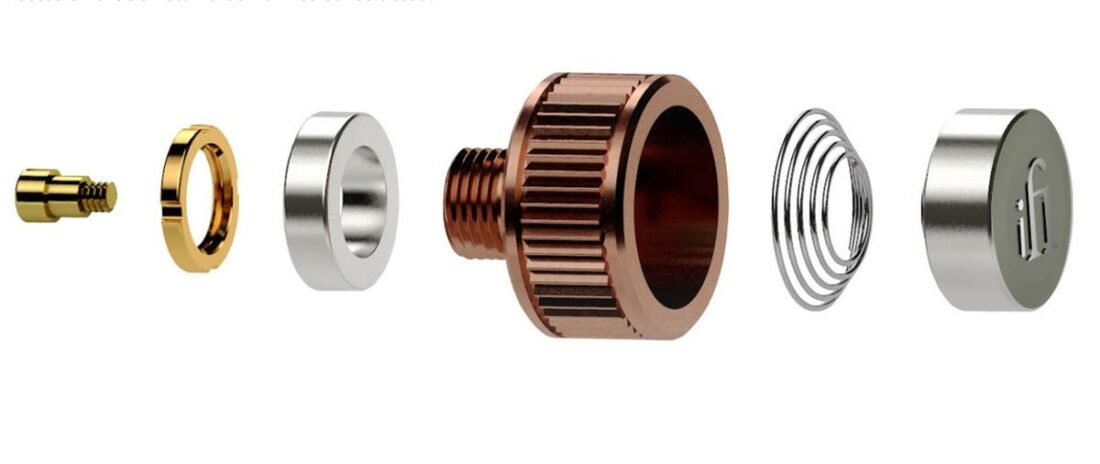
The dial is a joy to turn, with each step providing distinct feedback. Such simple elegance elevates the Go Blu above its peers.
Handling
The Go Blu is very easy to hold and operate in one hand, thanks to the meager 27g of weight.
The lack of a clip-on case makes it a bit difficult to mount. Other than that, it’s unassuming enough to blend in, whether placed on the desk or inside trouser pockets.
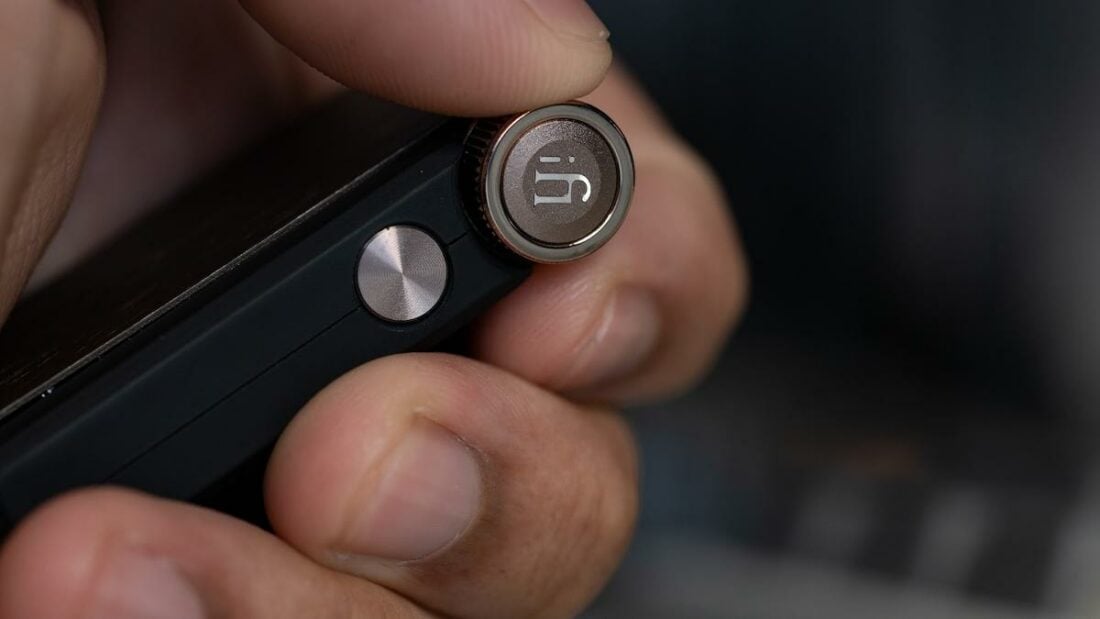
Power consumption
iFi advertises about 10 hours of battery life. I got between 8 – 9.5 hours, depending on the IEMs or headphones connected and the codec used. LDAC codec turned out to be the most power-hungry, and aptX was the most frugal.
One issue with the Go Blu is the misleading battery estimation when connected via Bluetooth.
My MacBook showed about 20% charge remaining, and within 15 minutes, the battery went dead. So I’d advise taking the battery estimation with several grains of salt.
Other than that, no qualms with battery life. It’s above average, given the competition, and I found the standby battery drain (when not in use) to be very good.
Internals
The diminutive size belies the sheer amount of tech inside, so let’s explore further.
iFi has traditionally used the BurrBrown PCM series of DAC chips, but the Go Blu departs from that trend with the CS43131 chipset. This Cirrus Logic chip has become popular lately thanks to its above-average amp stage and the choice of several digital filters.
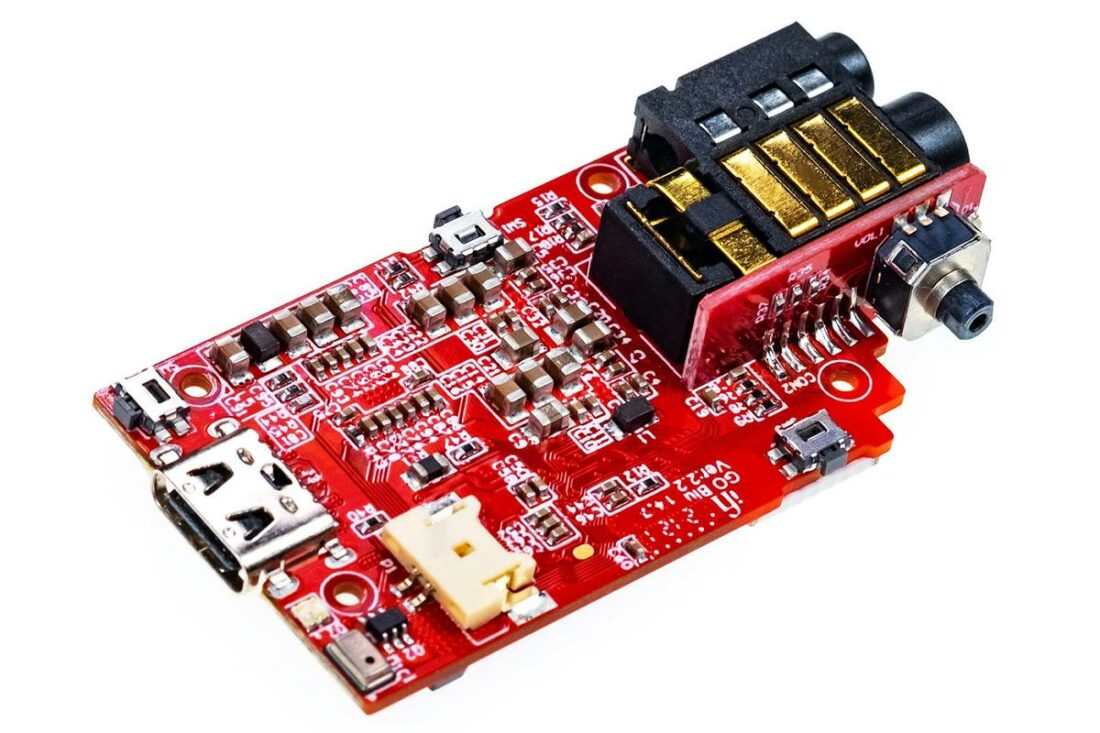
iFi keeps the PCB layout simple while opting for quality components, e.g., Murata capacitors. The amp stage is a dual-mono configuration, with each channel driven by a single amplifier chip.
This dual-mono configuration dramatically increases power output from the balanced output while reducing distortion figures and stereo crosstalk. Conversely, the single-ended output is underpowered, hampering overall dynamics.
iFi Go Blu Sound
The iFi Go Blu has a neutral tuning with no coloration barring the analog EQ modes.
Despite the neutral tuning, the treble is one area of the Go Blu’s sound that positively surprised me. Articulate and detailed without a hint of edginess or glare.
This is such a rare find nowadays that I kept listening to poorly mastered tracks on the Go Blu, searching for some instances of harshness. To no avail, of course.
As such, the Go Blu pairs exceptionally well with the current crop of planar magnetic IEMs, many of which have metallic timbre in the treble. Go Blu does not “fix” them outright but makes them much more palatable.
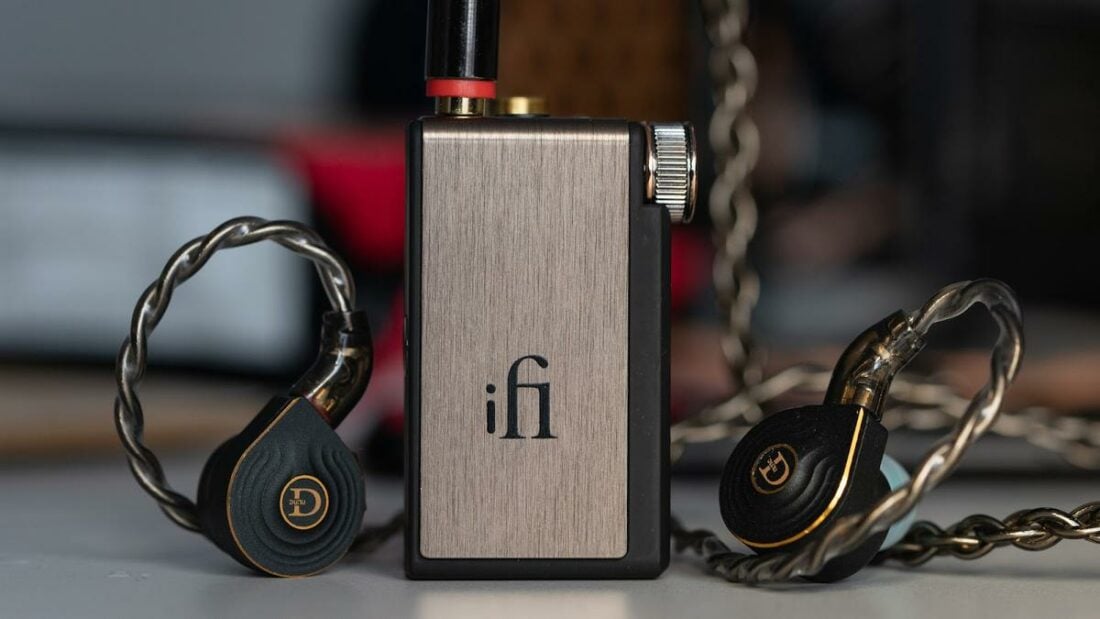
The Go Blu trounces most of the competition in terms of output power. Fiio’s BTR7 has got it beat, but the Go Blu has a higher voltage swing (5.6Vrms) which favors high-impedance headphones like the Sennheiser HD650.
Overall dynamics sound better than any BT dongles I have tried so far. Note that codec plays a role here, with the dynamics better rendered on aptX-HD and LDAC than on AAC or SBC.
The one area where the Go Blu falls short is sheer resolution. Listening to the Sennheiser IE 900, the lack of resolving prowess in busy tracks becomes apparent compared to desktop sources or mid-priced DAPs.
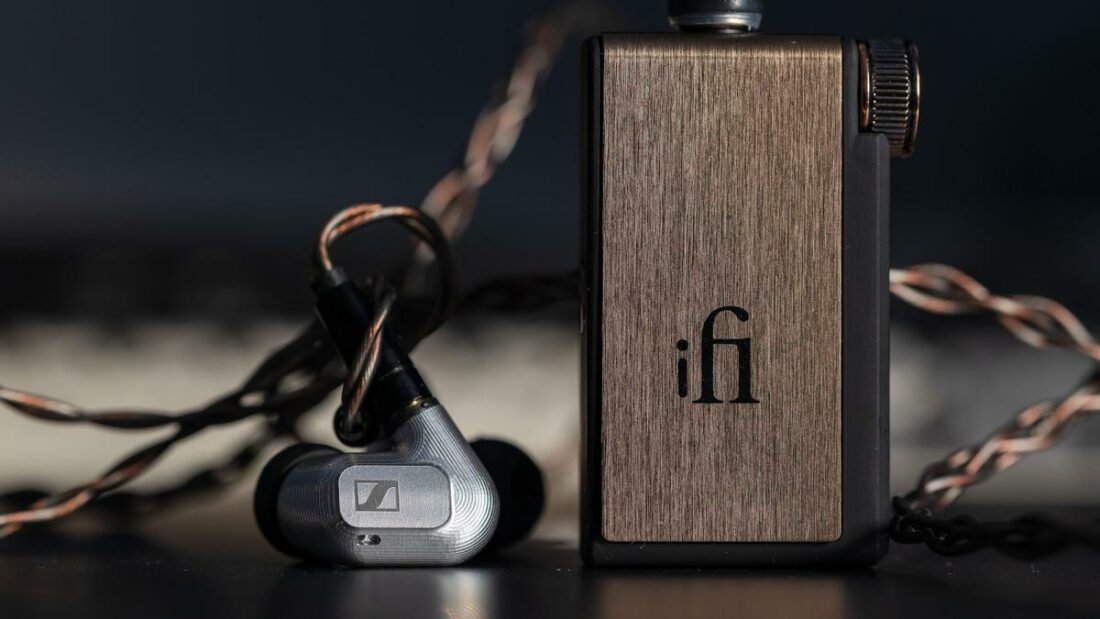
Another area where the Go Blu can’t keep up (much like its peers) is powering low impedance, low sensitivity IEMs. One such example is the Final E5000. These IEMs are notoriously difficult to power and act as an “edge-case” here.
Moreover, very sensitive IEMs like Campfire Audio Holocene or Dunu Zen Pro will exhibit slight hiss when paired with the Go Blu. It’s nothing too distracting, but some competing dongles perform better in this regard.
EQ modes
Another neat pair of features the Go Blu has are the two EQ modes: xBass and xSpace.
xBass can significantly boost the bass response, mostly maxing out around the sub-bass region. This can be very handy with some bass-light IEMs and headphones, though depending on the driver of said IEMs or headphones, some distortion can be heard at high volumes (e.g., on the Koss Porta Pro).
xSpace increases the upper treble, recessing the mids in the process. It can be perceived as an increase in the overall soundstage but can make the mids sound thin and distant.
It’s possible to apply both effects simultaneously, which makes the response even more V-shaped.
Wired operation
The Go Blu can also be connected via USB cable as a wired DAC/amp. Just make sure to disconnect from the BT device before going wired. One caveat in this mode is the noise on the power line of the USB. The Go Blu lacks filtering of such “noise,” and audible hiss may get magnified.
For example, when connected to my gaming PC, the hiss was audibly worse than when connected to my Macbook running on battery. Besides that, USB operation is seamless, with the Go Blu showing up as a source device on Windows and Mac without much fuss.
Reconstruction filters
The reconstruction filters can also be switched, though the process is more convoluted. There are two available filters on the Go Blu:
- Minimum phase filter (top LED turns Purple)
- Standard filter (top LED turns Green)
To switch between filters, triple-press the power button with the Go Blu connected and powered on. After that, quickly press the EQ mode button once. The top LED will flash in the appropriate color to show the change has been applied.
Microphone performance
The MEMS Microphone at the bottom offers great clarity during calls or online voice chat. Noise filtration is moderate, so expect surrounding noise to creep through if you are in a particularly busy area.
Comparisons
iKKO ITB03
The iKKO ITB03 is priced similarly to the Go Blu but has an OLED display with an actual menu to select reconstruction filters, sound profiles, and other settings.
The hardware design of the Go Blu is far more appealing. The ITB03 has a utilitarian design, and the UX while navigating the menu is unintuitive.
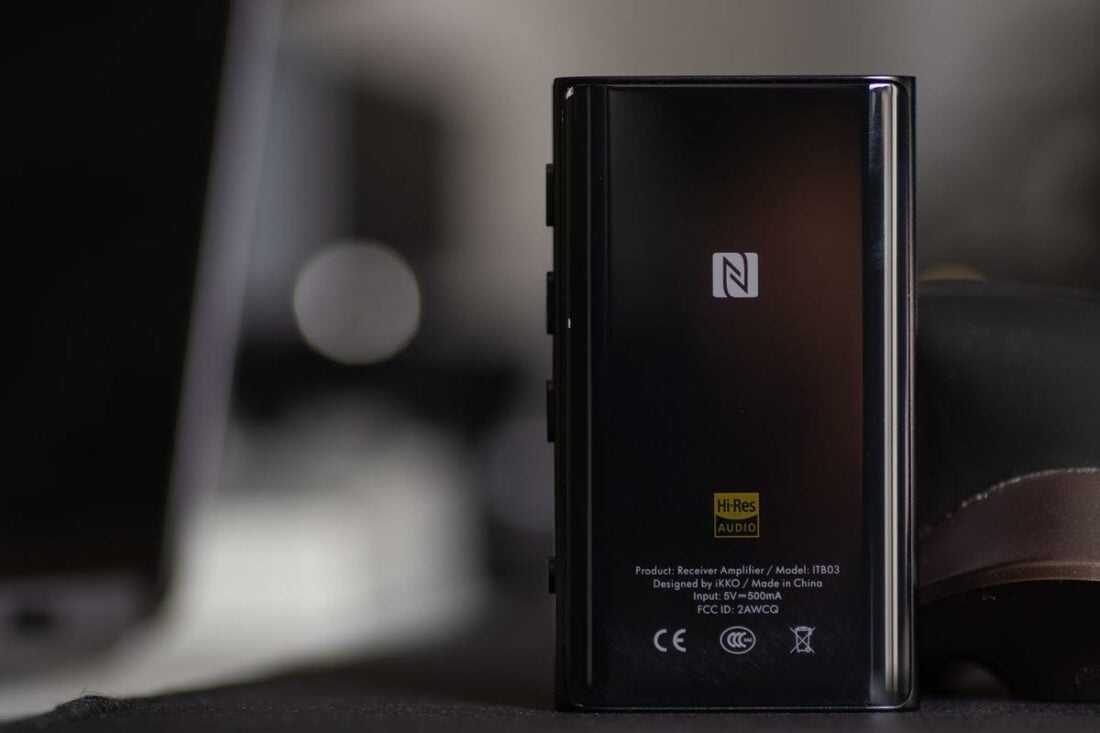
When it comes to sound, you first notice the higher output power of the Go Blu. High-impedance loads are driven better on the Go Blu. Battery life is also slightly better.
The ITB03 fares better regarding background noise or hiss, but that’s about it. I don’t find myself picking up the ITB03 whenever the Go Blu is around.
Where to Buy
Conclusion
The iFi Go Blu gets the little things right. It’s a joy to hold, and the sound is surprisingly competent. The price aligns with its peers, and the built-in EQ modes are the proverbial cherries on top.
Heck, this is the first Bluetooth DAC-Amp I intend to purchase, despite being averse to them for years.
There are some shortcomings, mainly the lack of an app (something the Qudelix 5K offers) and the exclusion of a clip-on case in the package. The absence of PEQ and DSP might be deal breakers for some, understandably so.
For my usage, these are minor misgivings, though, and the sheer charm of the Go Blu overshadows it all.
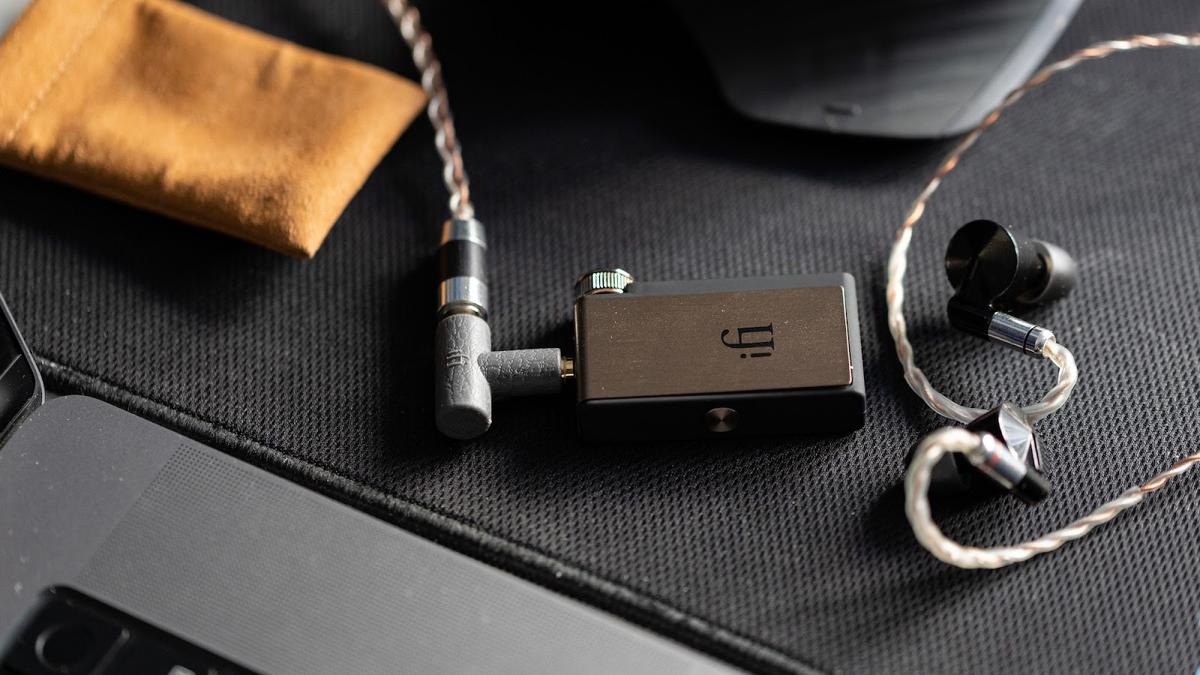
Great overview. My 2k AAW Canary never had hiss creep in, 4.4 balanced is the way to go. The green filter update did take the go blu to new heights. I tried the factory case with clip and didn’t like it. Switched to an aftermarket Miter leather case as I don’t like clips. I find in bluetooth, the Go blu sounds better inside a case compared to the bare unit. I can’t explain why, but without there is a glare or tinge to the sound that is irritating. Once the iPhone 15 went to USB C, it was game over. I can’t listen in Bluetooth anymore, it’s just that big of an upgrade. Ifi hit it out of the park with this one!